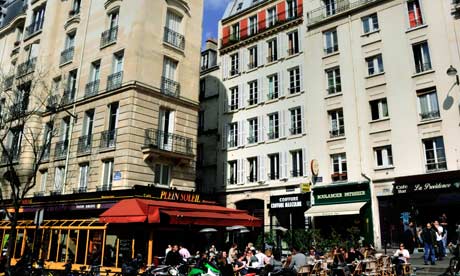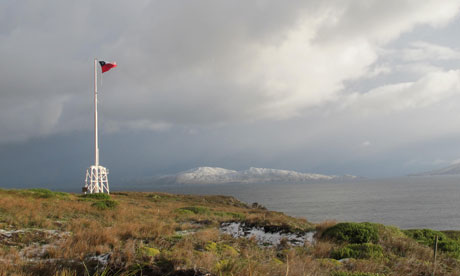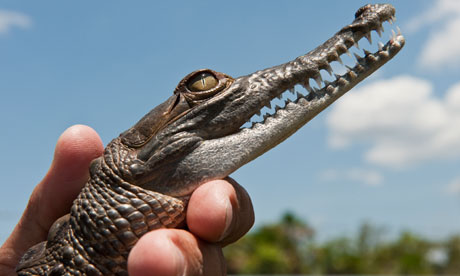THE WINNER
Before taking the measurements, I Sellotaped the crocodile's mouth shut. But as I placed a ruler across its brow and dangled its inflated belly from the hanging scales, sharpened canines protruded over its lower jaw, and marble-like eyes glowered back at me in the moonlight.
As soon as I removed the Sellotape, the juvenile darted back into the inky water and we resumed our navigation of the lagoon, or cocha. "Too big," José informed me when the prehistoric head of an adult motored past us. Later, when a smaller pair of eyes reflected in his flashlight, he whispered "ready?" and reached out to grapple another scaly torso into our dugout canoe.
After three hours of crocodile surveys, José steered us back towards camp. I sat in silence, listening to the plop and pull of the hand-carved paddle and watching the sputtering remains of an electric storm light up our jungle home like a flickering cinema screen.
I hadn't wanted to visit the Amazon as "just another tourist", and so, deep within the Pacaya Samiria national reserve, I had joined a team of Peruvian scientists to help monitor key species in a protected segment of the world's biggest rainforest.
Home was wherever we made it; levelling the shrub layer with machetes, stringing up hammocks and building a campfire each evening was all part of the routine.
Every night I would lie in my hammock watching fireflies dance through the sinuous trunks, allowing the clicks and burps, hums and screeches, whistles and whoops of a billion jungle beasts to sing me to sleep.
Each morning, we'd awake before sunrise to cook porridge, pull on sweat-drenched clothes and pickle ourselves in Deet before setting out to search for flame-red snakes, pink-toed tarantulas and neon butterflies. As the sun's heat warmed the undergrowth, the forest would come alive with the smells of candyfloss and burnt toffee, freshly mown grass and warm hay, fried onions, wet dogs, crushed garlic and Turkish delight.
During the afternoon river surveys, we'd steer our canoes down unmarked tributaries, track giant river otters as they chased down the waterways, disturb flocks of white egrets as we emerged around meanders and, where the river bed widened, watch pink river dolphins leap through the piranha-filled waters.
It wasn't until I left Peru that I realised just how remote my adventure had been. As the aeroplane rose out of the jungle-locked city of Iquitos and levelled out over the reserve, I pressed my nose to the window and scanned the rainforest for a dent in the trees where our hammocks had been, or a whisper of smoke from an evening campfire.
Five million acres of impenetrable green stared back. Unbroken, it reached out to the horizon, touched the sun and then dropped off the edge of the earth. Nothing, not even the cocha, was visible. Beneath this mass, my jungle home lay concealed, the teeming life of the reserve masked from the world above. The realisation of how utterly isolated I had been was incredible.
• For more information about volunteering, see the British Schools Exploring Society website, bses.org.uk
Lucy lives in Hove, East Sussex
The judge, Guardian Travel writer Kevin Rushby, says: "Lucy's story reads well, with a good opening followed by some excellent description of the jungle. I loved the pink-toed tarantula – a surprising image that really brought home how strange the Peruvian forests can be. Her experiences built to a fitting, and poignant, finish."
The prize: A 20-day Spirit of Shackleton Antarctica trip for one person, worth £11,339, with G Adventures (gapadventures.com).
RUNNERS-UP
Living the dream in Paris
 Café Plein Soleil, Paris. Photograph: Alamy
Café Plein Soleil, Paris. Photograph: Alamy
"Mum, now you're free do something really different with your life. Don't lose your get-up-and-go." My daughter was taking me in hand, because, at the age of 60, I'd just ended a relationship with a musician who'd turned out to be more prodigal son than partner.
Anne, my visiting American friend, chimed in: "What happened to your Paris dream? Do a flat swap! We Americans do it all the time."
An ad on the internet – "My London for your Paris. Wanted: a month-long flat swap" – brought a response from Chloe, a photographer commissioned to document London life. She moved in with a promise to water my plants; I would look after her cat, Joe.
Chloe's bedsit (on Avenue Parmentier in the 11th arrondissement) had a shared bathroom on the landing. Café Plein Soleil, the neighbourhood bar, served as the living room. A simple late supper and small carafe of wine was a nightly pleasure. On my first visit, a pair of regulars – septuagenarians Hermine and Claudine, lap dogs in tow – befriended me. They preferred the cafe to evenings in their apartments. "We'd love to practise our English with you, and we can help with your French."
Paris-Plages was a nice surprise. For a month, the roads along the Seine are transformed into a beach resort with palm trees, cafe-bars, a swimming pool and even a library. All free of charge. Most days I went early, in time to nab a sunlounger.
With my Paris adventure drawing to its end I invited bonnes vivantes Hermine and Claudine to the beach guingette (open-air dance hall) for a farewell aperitif. Tipsy on joie de vivre, we danced the night away. Later, Hermine suggested that I return and use her spare room for a while, to see if I'd like to live in Paris permanently.
Thrilled by her offer, I've decided to go back in spring with a view, just maybe, to selling up and starting anew. My daughter and my friend Anne were most impressed and, they had to admit, just a wee bit envious too.
Sandi Dunn, London
Scrubbing snakes in South Africa
It's 8.30am as I arrive for my first morning on a volunteering holiday at Khamai Reptile Centre in South Africa. I have never been near a snake before. I ask Matt, the curator, what he wants me to do. He would like me to climb inside the rock python's enclosure to give it "a bit of a scrub". I point out that the python – all three metres of him – is curled up at the bottom.
"Carefully place a towel over his head and that'll calm him. You'll be fine," says Matt. And so, heart hammering, in I go. Matt turns out to be right.
Next he takes me to meet the puff adders, the fastest striking animals in the world. He gently prods them from a safe distance and, though they warn him, they never strike. "People get bitten because they pick them up."
By now even I'm admiring their exquisite sandy colouring and zigzag patterning. "Snakes don't want to bite people," Matt says. "There's been a juvenile black mamba in the tree above you all this time. Notice how he didn't drop down and bite you."
This is the essence of a trip to Khamai, a centre that educates the often terrified local population that snakes do not need to be exterminated.
In the afternoon I get to work with another of the demonstration reptiles, the snouted cobra, learning how to handle it safely using a grabstick. Another day I participate in a dissection in the lab. You may also be involved in call-outs, removing snakes from local farms and houses. Not that it's all toil. Staff take us for hikes along the Olifants river and up to the magnificent Blyde Canyon.
At the end of my trip, as I enjoy a braai (South African barbecue) under the stars, I look back on an exhilarating fortnight. I have learned how to handle safely some of the world's deadliest reptiles and hopefully played a part in helping people gain a healthy respect for them. And my most perilous encounter was with Rocky, the park's parrot, who resented having his feathers clipped …
• khamei.co.za
Adrian Cross, London
Round the Horn
 Cape Horn, looking towards Deceit Island. Photograph: Robert Ratcliffe
Cape Horn, looking towards Deceit Island. Photograph: Robert Ratcliffe
I have to be at the pier at 6pm for embarkation, but first I want to cash in my voucher for a drink at the Cape Horn Hotel. I already know what I want: a "calafate sour", made with pisco brandy and the black-blue fruit of the calafate. The calafate is native to Patagonia and whoever eats its fruit is said to be certain of returning.
To cap six months' journey through South America I'd booked a cruise round Tierra del Fuego, the remote "Land of Fire" at the southern tip of the continent. We are to be at sea for four days, are promised penguins and petrels and will sail between the pale blue tongues of glaciers licking the Beagle Channel; but for me the highlight will be a call at the infamous Cape Horn.
From the sea, Tierra del Fuego looks beautiful but empty. From the estimated 20,000 people who lived here at the time of Magellan, there are now only a fraction left.
At daybreak on day four we drop anchor in the lee of Hornos Island. It's the last speck of land in the Americas: 400 miles to the south is Antarctica. We skim across the rough sea in inflatables, shielding our faces from hailstones. On the island the wind is fiercer still: it is a raw, exposed, extreme place, and I'm here in late summer. Some 800 ships and 10,000 men are thought to have perished trying to round the Horn since it was first sighted by the Dutch in 1616.
Like many resonant places, Cape Horn is more about being there than about what you see. There's a small Chilean naval station and lighthouse, a monument to lost sailors and a tiny wooden chapel. But what you have mostly is the sense of being at the edge of somewhere terrible.
After 90 minutes we head back to the ship, to the aroma of bacon frying in the galley. It is good to be back on board, but after Cape Horn anything that happens, maybe for weeks to come, is going to feel like anti-climax.
• Victory Cruises (victory-cruises.com) has four-night trips around Cape Horn from $1,250 full board, departing Punta Arenas in Chile and arriving Ushuaia in Argentina
Robert Ratcliffe, Edinburgh
A Namibian ghost
The scariest film I've ever seen is the Blair Witch Project. I know people who were bored by it, but it depends on whether you've ever camped in the woods. I grew up trading ghost stories around campfires, and that's why the film rang true – it's what you can't see that chills you to the bone.
A few years ago, while driving across Namibia, I stopped at a remote farm near the Fish River Canyon. The farmer's wife suggested that she drove me to the bottom of the canyon where I could camp and walk back the next day. We drove 10 miles further into the wilderness down a rocky track that she told me had been built by German soldiers. Then, with a friendly warning to beware of the leopards, and a promise to send a search party if I wasn't back before noon the next day, she was gone.
The canyon was perfect. I knew I was the only person for miles, and swam in rock pools, read in the sun, and eventually made a fire. As darkness fell, I unrolled my sleeping bag close to the fire and watched the embers slowly fade as the stars began to drip down from the Namibian night sky.
It was then that it began. At first there was a soft, shuffling noise, like someone trying to creep up on me. I tried to remember whether leopards were nocturnal. But soon it was obvious that this wasn't the quiet padding of a big cat. These were footsteps.
My imagination took over; these footsteps must be the ghosts of the soldiers who had died making the road. I clutched rather pointlessly on to my penknife, feeling utterly helpless.
The footsteps quietened and then returned, circling me slowly in the darkness. I held out until 4am, unable to sleep. During a quiet spell I packed up as quickly and quietly as possible, and marched out.
I arrived back at the farmhouse as the sun rose. Sheepishly, I told the farmer's wife of my ordeal. She laughed. "Oh, so you met the aardvark then? They sound just like humans."
Simon Fenton, Brighton



